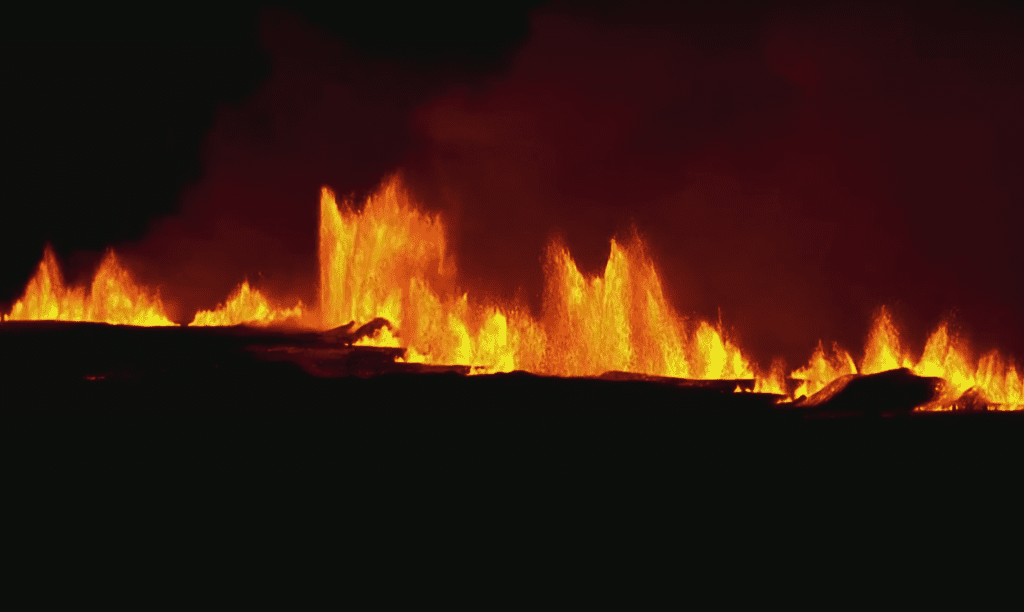A volcanic eruption has occurred on the Reykjanes peninsula in southwest Iceland, following a period of heightened seismic activity.
Approximately 4,000 residents were evacuated from the town of Grindavik, and the popular Blue Lagoon geothermal spa was closed as a precaution.
The eruption commenced north of Grindavik at 22:17 local time, according to the Icelandic Met Office.
The capital city, Reykjavik, and its surrounding areas have witnessed increased earthquake activity since late October.
- Explosion At Oil Depot Forces School Closures In Guinea’s Capital
- LSK Says Judiciary Under Threat Over Ruto Sword Remarks
Social media images and videos captured lava spewing from the volcano shortly after a series of seismic events.
A coastguard helicopter was dispatched to determine the precise location and scale of the eruption.
The Met Office reported that the eruption was situated approximately 4 km northeast of Grindavik, with seismic activity advancing towards the town.
The volcanic crack measured about 3.5 km, and the lava was flowing at a rate of 100 to 200 cubic meters per second—significantly more than previous eruptions in the Reykjanes peninsula.
Vidir Reynisson, a senior police officer at the Civil Defence, described the eruption as “quite a large event” that unfolded rapidly.
He noted that lava was streaming in various directions from a substantial crack in the volcano, producing high jets of lava at the outset.
The eruption is visible from Reykjavik, approximately 42 km northeast of Grindavik.
An eyewitness reported that half of the sky in the direction of Grindavik was “lit up in red,” and smoke could be seen billowing into the air.
Authorities warned people to stay away from the affected area.
Iceland’s Prime Minister, Katrin Jakobsdottir, expressed optimism regarding recently constructed defenses and conveyed her thoughts to the local community facing this “significant event.”
President Gudni Johannesson emphasized the priority of safeguarding lives while assuring efforts to protect structures.
The eruption evokes memories of the Eyjafjallajokull eruption in April 2010, which led to the largest closure of European airspace since World War Two due to an extensive ash cloud.
Estimated losses from that event ranged between 1.5 billion and 2.5 billion euros.
